shirakawa gifu
Shirakawa Gifu: Striking the Right Balance with Overtourism
Thuy Fang
Posted on May 27, 2025
Share:
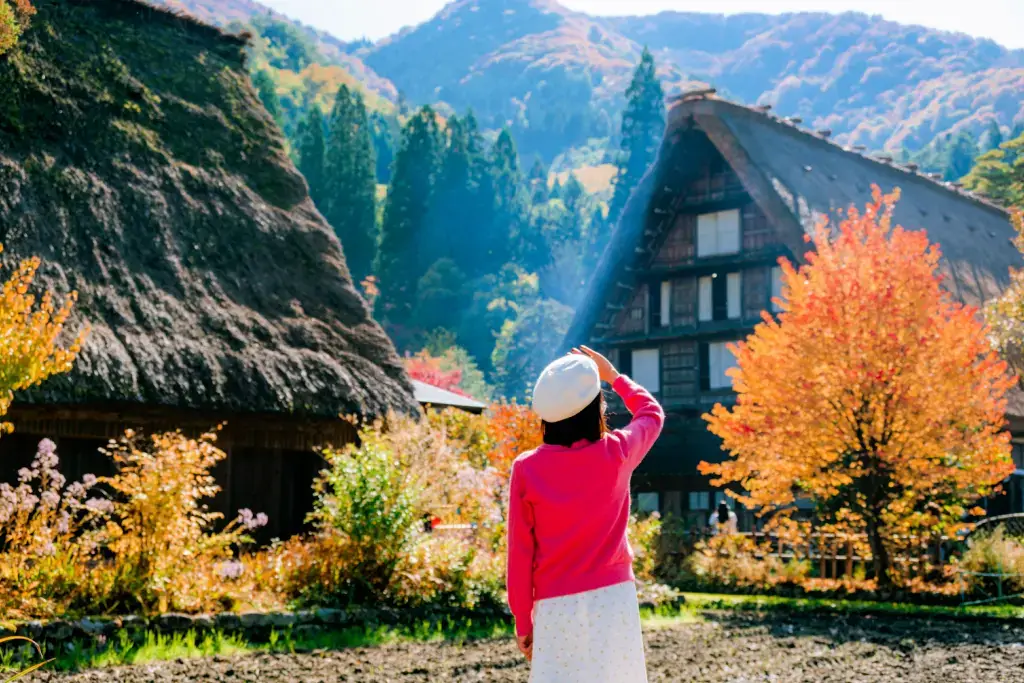
With its many treasured landmarks, Japan has the opportunity to set an example for the world in managing tourism thoughtfully and respectfully. As the number of tourists grows, balancing visitor welcome with respect for the community’s way of life becomes essential. Let’s explore the practical measures that Japan has been implementing to tackle the issue of overtourism in Shirakawa Gifu, one of the World Heritage Sites.
What makes Shirakawa-go a popular destination?
Shirakawa-go is a peaceful little village surrounded by the green mountains of Shirakawa, Gifu Prefecture. With its tall, pointy thatched roofs, the wooden houses here look like hands pressed together in prayer. This style is called gassho zukuri. These clever rooftops help snow slide off in the winter, which is essential because Shirakawa-go gets a lot of snow! The village has been around for hundreds of years and is now a special World Heritage Site.
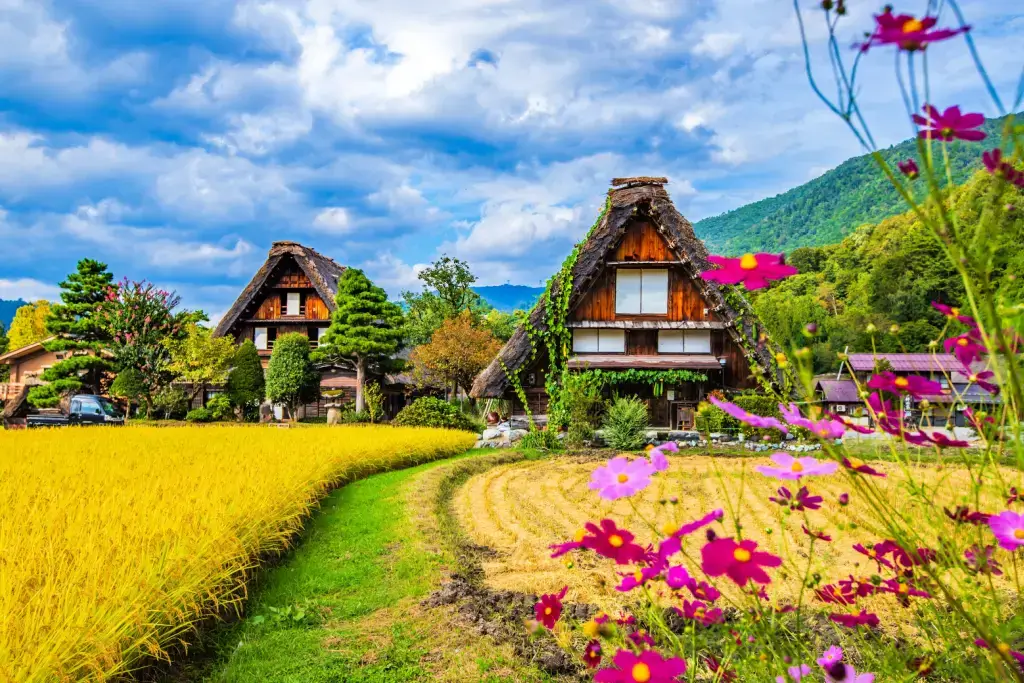
Wander through Ogimachi, the most significant part of the village, and you’ll find more than 100 of these cool houses. Some are museums where you can learn about silk-making and farming; others are real homes where people still live. You can even sleep in one of the cozy guesthouses and wake up to birds singing and the soft smell of wood smoke.
There is much to discover and enjoy. You can try some yummy local snacks or shop for handmade crafts. Visit the outdoor Gassho-zukuri Minkaen Museum to peek inside old houses and see how people lived long ago. And if you come in October, you might see the Doburoku Festival, which has dancing lions and a special event.
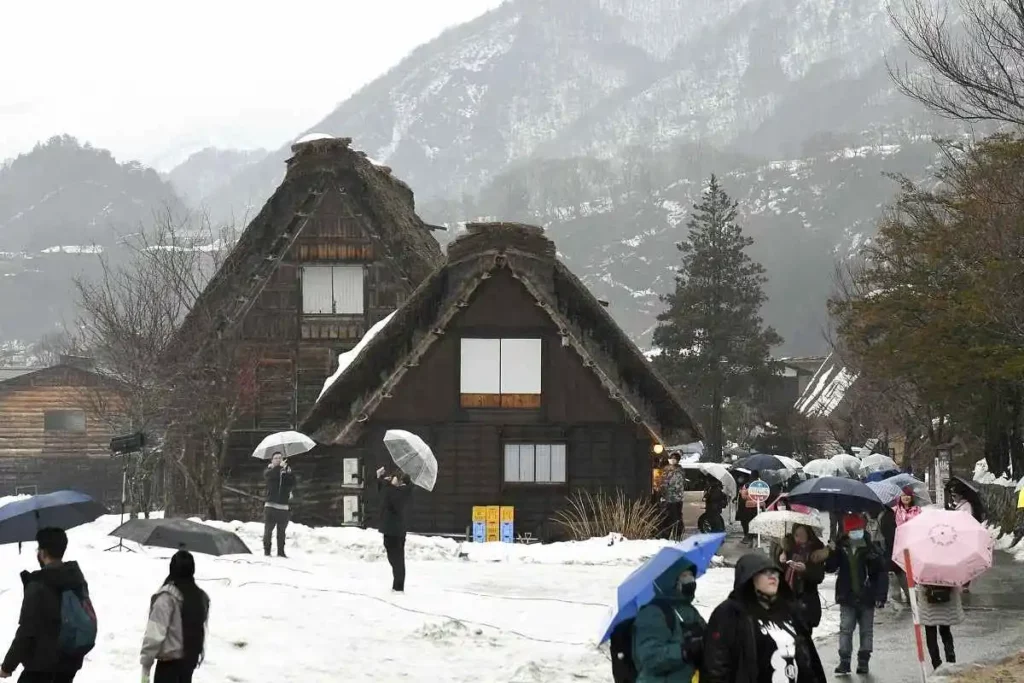
Moreover, Shirakawa-go changes with every season. In spring, you’ll see pink cherry blossoms. Summer brings bright green rice fields. In the fall, the leaves turn orange and red. Everything is covered in fluffy white snow or lit at night in winter.
What is the overtourism situation like in Shirakawa-go?
In the past, only a few people visited Shirakawa, Gifu. In 1995, about 770,000 people visited. However, that number jumped to over two million by 2019! Even in 2024, around 2.08 million people came to see the village. That’s a considerable number, especially since only about 500 locals live there!
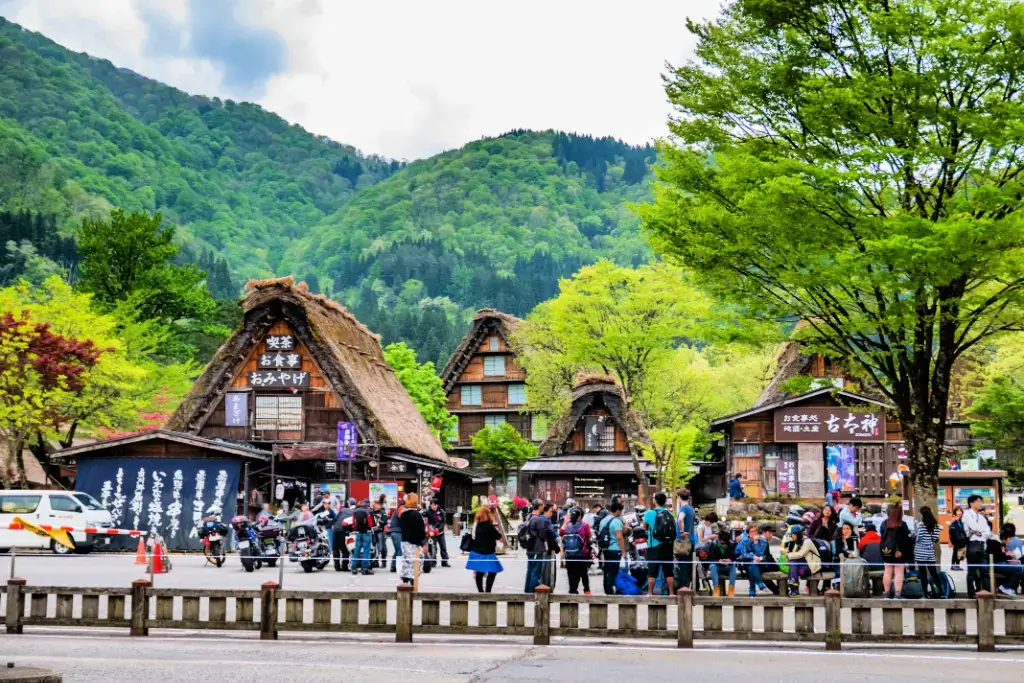
When too many visitors come at once, it can cause numerous problems. Cars get stuck in long traffic jams, especially during holidays. It’s also hard for villagers to go about their daily lives. Parking spots fill quickly, and many tourists don’t follow the rules. Some people even walk into private residences or step onto farm fields to take photos, which is disrespectful.
Are you looking for great snacks to enjoy while roaming the countryside? Check out Sakuraco! Sakuraco delivers traditional Japanese snacks, teas, and sweets from local Japanese makers directly to your door so you can enjoy the latest treats directly from Japan!
What measures have been introduced to control this overtourism situation?
Some friendly and innovative changes have been made to help protect the peaceful life in Shirakawa-go and make visits better for everyone. First, the village created a special guidebook called Reconnecting Shirakawago. It’s full of helpful tips and essential rules for tourists. In addition, it reminds people that Shirakawa-go is an authentic village where families live, not a theme park. The book also includes fun comics and a video that teaches visitors to be respectful during their trip.
The guidebook also shares fun places outside the main World Heritage area, such as the Former Toyama House, Miboro Dam, and nearby hot springs. This way, tourists can enjoy Shirakawa Gifu’s hidden gems more, and the village center won’t be too crowded.

The village has also established five basic rules to ensure safety and cleanliness. Nighttime sightseeing is not allowed, and smoking, fireworks, and littering are prohibited. Everyone should take their trash home. Visitors should not enter people’s homes or take photos in private areas. Cars must be parked in village-run lots, and drones are not allowed.
Moreover, parking fees have also increased. Cars now pay 2,000 yen ($14) instead of 1,000 yen ($7), and big buses pay 10,000 yen ($70)! The money from these fees helps maintain the parking areas and keep the beautiful houses and surroundings in good shape. Not to mention, the village might also add extra charges during busy seasons like summer holidays and winter to help reduce crowding.
Why is addressing overtourism in Shirakawa Gifu important?
Overall, managing overtourism is crucial to preserving the distinct charm of this historic village in Shirakawa, Gifu. The traditional houses, scenic landscapes, and rich culture make it a place like no other for visitors and the residents who call it home.
Sustainable tourism also ensures that future generations can experience the beauty and serenity of Shirakawa-go without overwhelming the local environment or residents. As travelers, we all play a role in ensuring that the places we visit remain special for years. What steps can tourists take to help preserve unique destinations like Shirakawa-go? Share your thoughts in the comments!

Discover authentic flavors with Sakuraco
Get Sakuraco 

Discover authentic flavors with Sakuraco
Get Sakuraco 
Related Articles

Japanese Gin: How a New Distillery Is Redefining Craft Spirits
Japanese gin has gained popularity due to the use of local ingredients and meticulous production methods by many distilleries. A new gin from Fukushima is adding momentum to this trend by focusing on the region’s water and native plants.
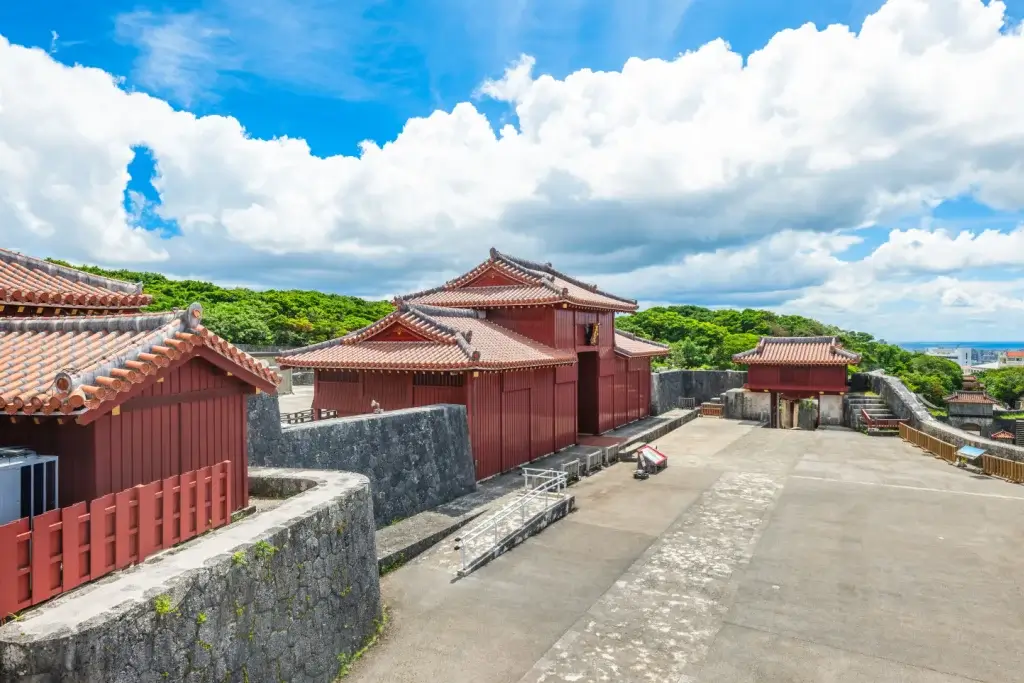
Shuri Castle Receives Partial Restoration in 2025
Shuri Castle, an iconic symbol of Okinawa’s Ryukyu Kingdom heritage, has long captivated the hearts of both locals and visitors. Located in the vibrant city of Naha, Okinawa, the castle’s bright vermilion walls and graceful architecture tell the story of a unique kingdom that flourished independently for centuries.

Kyoto Bamboo Forest Light Show: Illuminating Tradition and Nature
Every autumn, Kyoto’s Arashiyama Bamboo Grove (also known as the “Kyoto Bamboo Forest”) has mesmerized visitors with its mysterious charm and soothing atmosphere. The bamboo light show has returned in 2025 after a four-year break caused by the pandemic.

Japan Winter Came Too Early: Should We Be Worried?
Typically, late November brings cool days, with dipping temperatures around 10 to 15°C (50–59°F) in many regions. This year, though, things feel different. Because of these changes, many people are asking: Did Japan’s winter really arrive too soon?



